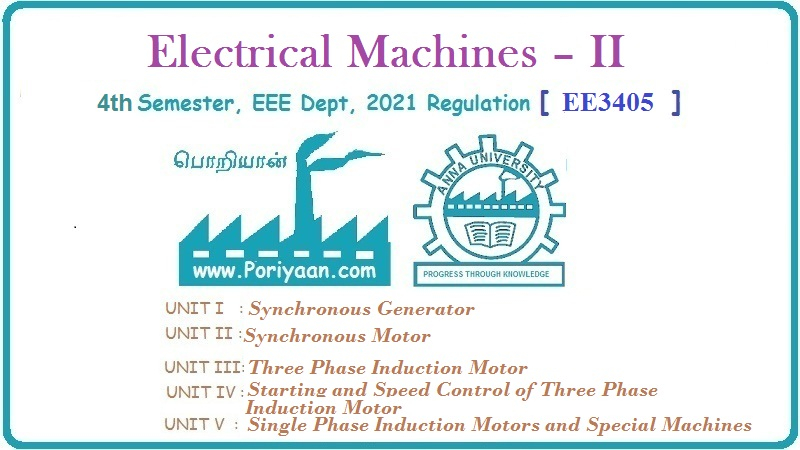Electrical Machines II: UNIT I: a. Synchronous Generator
Excitation Systems
Synchronous Generator
For the small machines, the required d.c. supply is obtained from d.c. generator called exciter.
Excitation Systems
Giving
d.c. supply to the field winding, for the production of the necessary flux is
called excitation.
For
the small machines, the required d.c. supply is obtained from d.c. generator
called exciter. It is mounted on the main shaft of the alternator. The
d.c output of the exciter is given to the field winding of the alternator
through slip ring and brush assembly as generally the field winding is on the
rotor. In some machines, a current is supplied to the exciter by another
smaller d.c. generator called pilot exciter. But this arrangement is not very
sensitive, quick and effective if it is required to change the excitation of
the alternator.
For
the medium size machines instead of d.c. generators, a.c. generators are used
called a.c. exciters. The output of such a.c. exciters is rectified and then
given to the rotor of the main alternator using slip ring and brush assembly.
The excitation can be varied and controlled as per requirement in such method.
Still
these two methods are not very much suitable for the large alternators hence a
brushless excitation system is used for the large alternators.
1. Brushless Excitation System
With
the increase in rating of an alternator, the supply of necessary magnetic field
becomes difficult as the current values may reach upto 4000 A. If we use
conventional excitation systems such as a d.c. generator whose output is
supplied to the alternator field through brushes and slip rings then problems
are invariably associated with slip rings commutators and brushes regarding
cooling and maintenance. Thus modem excitation systems are developed which
minimizes these problems by avoiding the use of brushes. Such excitation system
is called brushless excitation system which is shown in the Fig. 1.7.1.

It
consists of silicon diode rectifiers which are mounted on the same shaft of
alternator and will directly provide necessary excitation to the field. The
power required for rectifiers is provided by an a.c. which is having stationary
field but rotating armature.
The
field of an excitor is supplied through a magnetic amplifier which will control
and regulate the output voltage of the alternator since the feedback of output
voltage of alternator is taken and given to the magnetic amplifier. The system
can be made self contained if the excitation power for the magnetic amplifier
is obtained from a small permanent magnet alternator having stationary armature
which is driven from the main shaft. The performance and design of the overall
system can be optimized by selecting proper frequency and voltage for a.c.
excitor. The additional advantage that can be obtained with this system is that
it is not necessary to make arrangement for spare excitors, generator-field
circuit breakers and field rheostats.
Review Question
1. Explain the brushless excitation system used in an
alternator. Methods of Ventilation
Electrical Machines II: UNIT I: a. Synchronous Generator : Tag: Engineering Electrical Machines - II : Synchronous Generator - Excitation Systems
Related Topics
Related Subjects
Electrical Machines II
EE3405 Machine 2 EM 2 4th Semester EEE Dept | 2021 Regulation | 4th Semester EEE Dept 2021 Regulation
